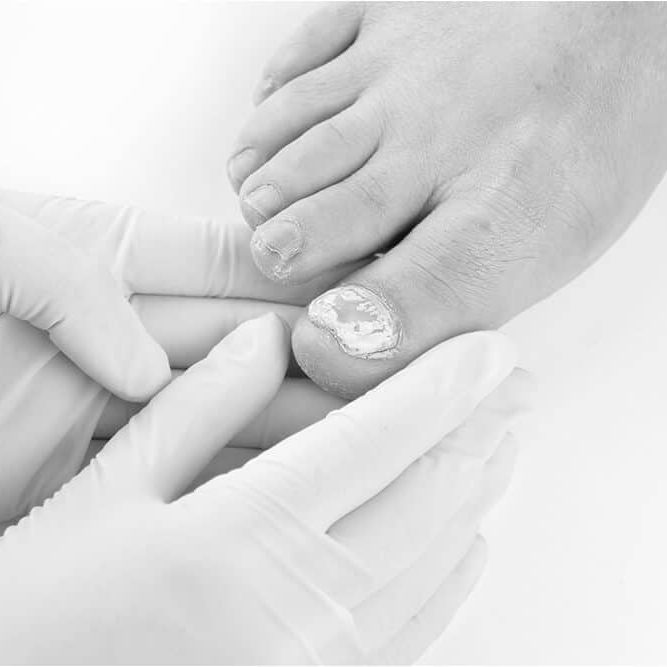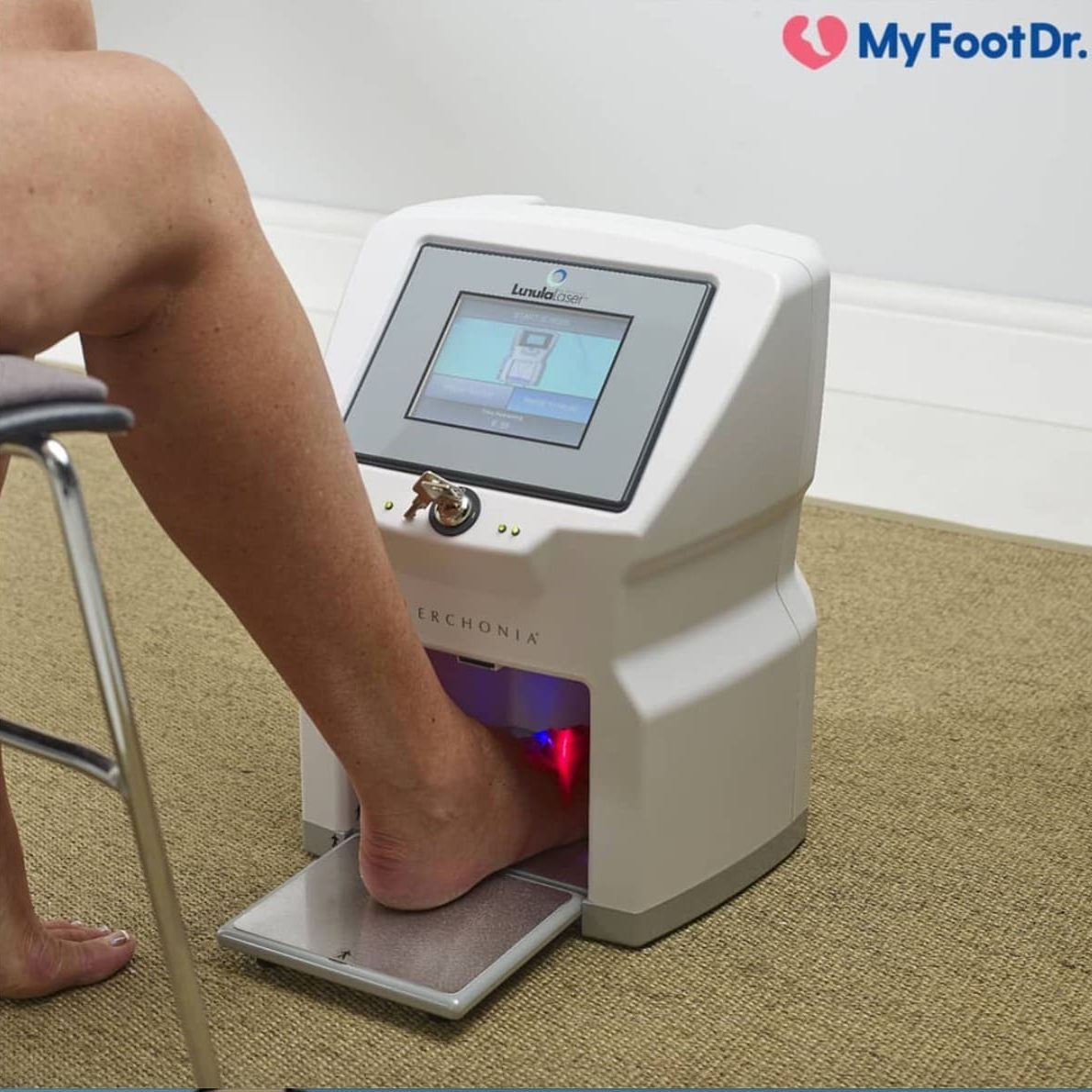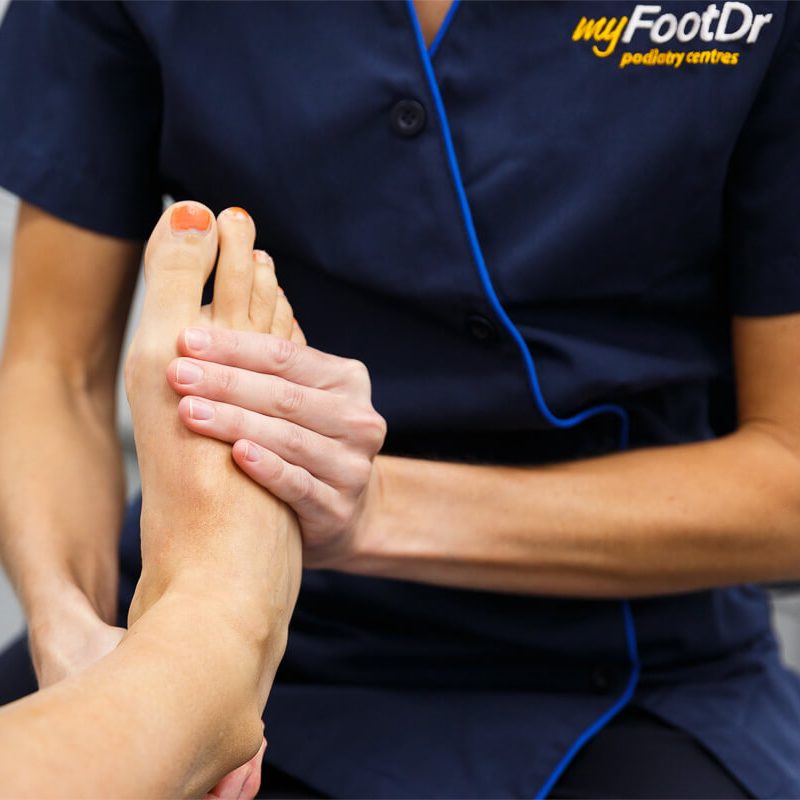Managing Fungal Nails
Onychomycosis is the name given for a fungal infection of the nails. This type of infection is very common in both fingernails and toenails, although, it is more frequently the toes that are affected as fungal organisms are attracted to dark and humid environments such as inside a shoe.
Fungal infections can cause the nails to thicken, discolour, deform, crumble and split. Often they are often of cosmetic concern as they are unsightly, and at times, painful.

Causes of Fungal Nails
Onychomycosis is caused by fungal organisms that invade the nail through the nail bed or nail plate. The fungus may infect a nail damaged by trauma and can often spread from the skin to the nails and from person to person. The nail itself provides a protective covering that allows the fungus to grow underneath on the nail bed unimpeded.
The primary fungi that cause onychomycosis are dermatophytes, but non-dermatophyte fungi such as yeasts and moulds may also be causative agents.
These fungi thrive in a warm and moist environment.
There are several factors that may put you at increased risk of developing fungal toenails. These include:
- Trauma to the nail. Acute or repetitive micro-trauma such as rubbing.
- Poor hygiene – not drying off the feet thoroughly after bathing or exercise
- Living in a warm environment
- Excessive sweating
- People with a compromised immune system – including people with Diabetes and HIV.
- Poor peripheral circulation
- Warm, moist environment from occlusive footwear
- Working in a wet environment
Common Demographic
Toenail fungus is rare in children but the incidence increases as you age. This condition is most common in people aged over 60.
Diagnosis of Fungal Nails
Clinical diagnosis of onychomycosis is based on a physical examination, and if needed, a microscopy and/or culture of nail specimens can be carried out. Several nail disorders may mimic fungal nail infections including psoriasis.
Fungus Nail Care Management
Onychomycosis is difficult to manage primarily because nails grow very slowly. The toenails grow on average about 1.5mm per month; this is half the rate at which fingernails grow. The nail is made up of a protein similar to hair and isn’t able to regenerate, so care management generally work by reducing the spread of the fungus and waiting for the nail to grow out. This can take years in some cases.
Care Management options include medical laser care management (Lunula), topical medication, oral medication.
Laser care management
This is a major advancement in the care management of onychomycosis with over 80% success rate. The laser light is used to penetrate the skin and nail plate to destroy the fungus in a single care management without damaging the nail or skin itself. The procedure is pain-free and there are no side effects. After the care management, the nail will grow out free of fungal infection. Cost is to be considered although for persistent cases it is cost effective. The Lunula laser care management is only offered by leading providers at this stage.
Oral medication
A medication is taken orally generally for 6-12 weeks. To have these medications covered under the pharmaceutical benefits scheme a microscopy study of your nail cuttings is required to confirm that a dermatophyte or yeast infection is present. In addition, before prescribing one of these medications, Doctors often order a blood test to make sure the liver is functioning properly; blood chemistry is often monitored quarterly for those at risk of adverse effects such as liver disease. The success rate is approximately 50% which makes it much more attractive than topical care management, however, side effects are well documented in some people who take these oral anti-fungal medications and the excessive cost is to be considered with newer oral anti-fungal care management.
Topical medication
A medicated nail lacquer is applied to the nails daily for a long period. There are no side effects, although you must take care to avoid application to the adjacent skin as this can cause irritation. Application of topical agents is quite a laborious task and there are generally compliance factors to consider. Also at times, daily application isn’t possible due to difficulty bending (particularly with elderly). The care management is a popular 1st line care management due to comparatively low cost, although, this care management doesn’t have a good success rate as the medication doesn’t readily penetrate into the nail plate or nail bed to reach the fungus. The efficacy rate is approximately 8-10%.
How can we help
If you suspect you have developed a fungal toenail infection, it is advised that you see your podiatrist who can professionally diagnose and manage the condition.



